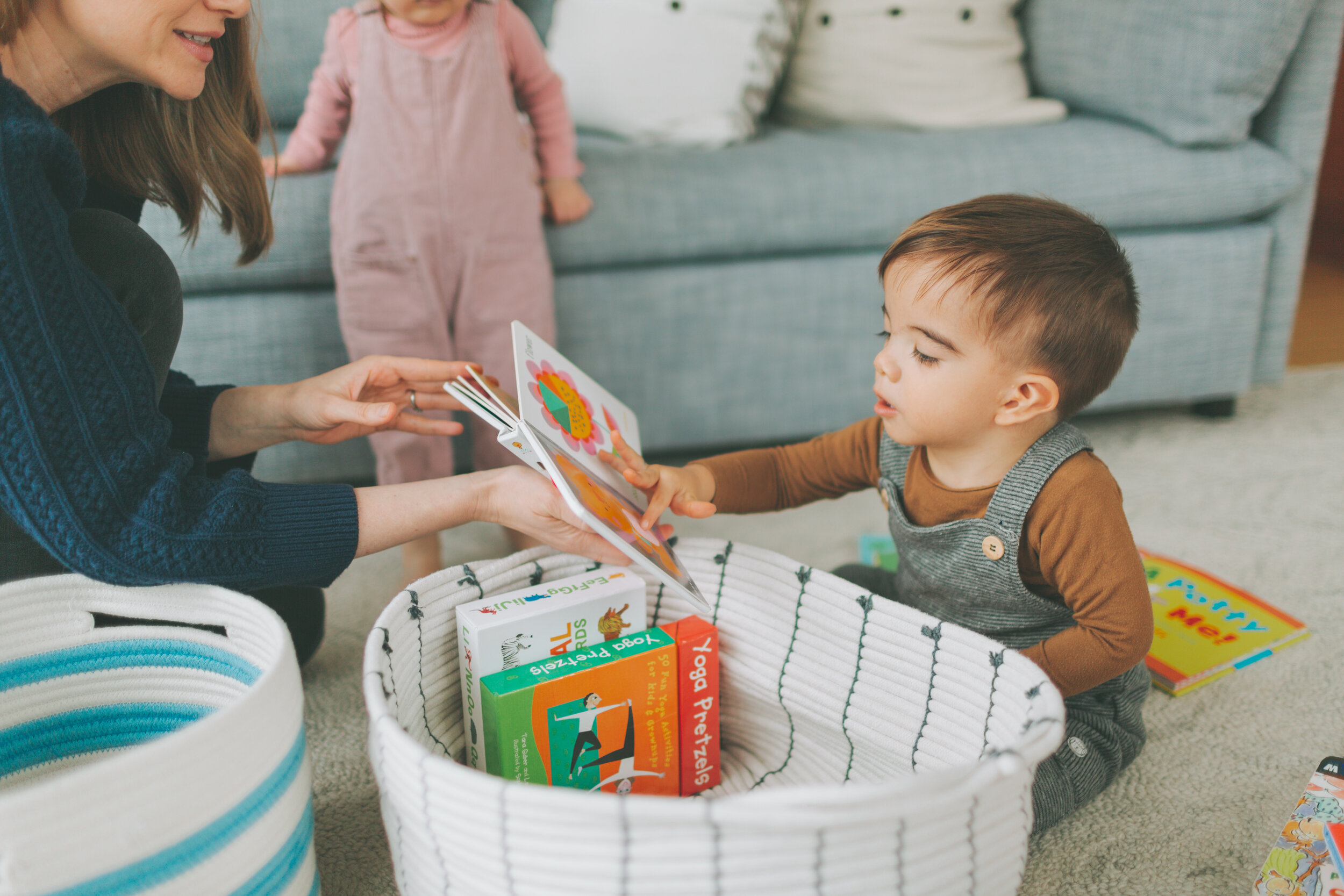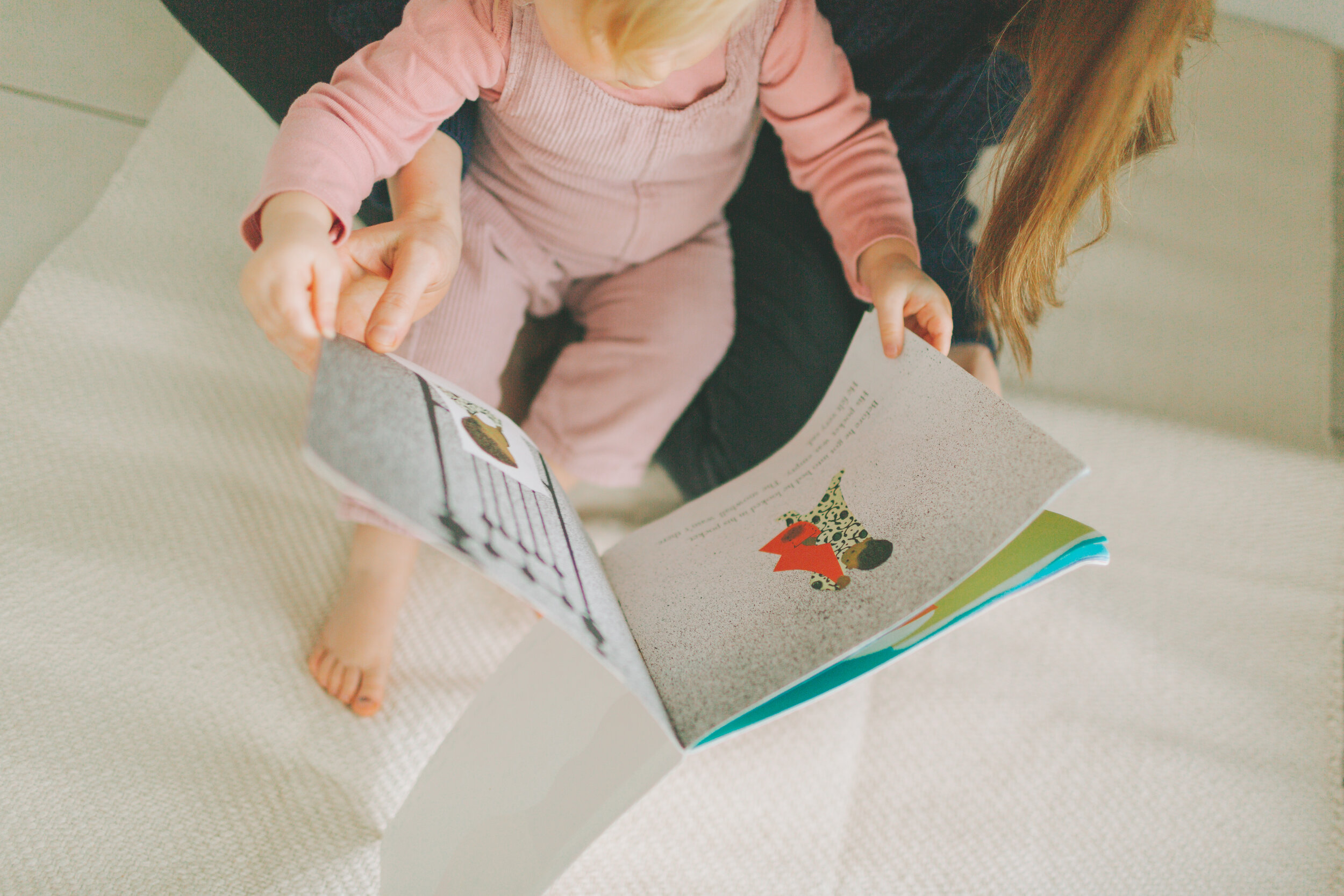Steps to Learning How to Read That you May Not Have Considered
Literacy Milestones
When we think of helping our child learn to read, most of us think about teaching them their letters and the sounds they make. That’s not a bad instinct because yes, they will definitely need to know that one day! But as you’ll learn today, the letters are just one piece of the puzzle.
This post is meant to give you a sense of all of the little things your child learns at different points in their development, which together make up foundational skills that they’ll draw upon later, as they learn to read.
We hope that understanding these milestones will reinforce the great things you’re already doing for your child, while giving you a few additional ideas to support your child’s development as they progress through the stages.
How to use this post:
It can be fun to read ahead on these milestones to find out what you can expect your child to learn next! We know we do this all the time for our kids.
This would also be a great post to save and refer back to as your child ages, to give yourself a quick refresher when they move on to a new phase.
Resources:
We know it can be tough to keep kids engaged in books, especially when they’re really young. Choosing the right books can help a lot with this! Since we often get asked about the things we look for in books for babies and toddlers, we made up a book list that you can download here.
3-12 months
Milestones:
Likes to chew and pat books
Can focus on large and bright pictures in a book
Shares books with an adult as a routine part of life
What To Do:
At this age, you just want to expose your child to books that they find engaging, so that they start to develop a positive connection with them. Keep books around and accessible, and try to make ‘reading’ something you do together every day, even if the books are very simple (like board books).
Tips:
Remember that it’s never too early to start reading with your child, and don’t worry if their attention doesn’t last all that long.
1-2 years
Milestones:
Recognizes certain books by their covers
Listens to simple stories, songs, and rhymes
Likes to turn pages
Attends to a book or a toy for two minutes
Points to and labels pictures independently
Pretends to read books
What To Do:
Make reading interactive! Give your child opportunities to turn pages, point to images, and finish any sentences they know from repetition. With your help, your child is discovering all the different things they can do with books. Help your child to see how fun and engaging a book can be.
Tips:
Don’t worry if they still can’t sit and read for long, or if they don’t finish a whole book. This is totally normal at their age. Choosing interesting and engaging books can help!
It’s also okay to let them hold a toy while you read. Bonus points if it’s a toy that is related to the book, like holding a truck while reading a book about trucks.
2-3 years
Milestones:
Likes to listen to books/stories for longer periods of time
Holds a book correctly
Begins to recognize logos (e.g., McDonald’s Golden Arches)
Begins to show a difference in writing versus drawing
What To Do:
Continue to encourage their enjoyment of books. Because their attention span is increasing, they’ll be able to enjoy longer stories. Help your child make connections between the things they’re learning from books, and the things they see in their world. This is great for helping to support learning new vocabulary words.
3-4 years
Milestones:
Begins to pay attention to specific print, such as the first letter of his name
Recognizes logos and other environmental print and understands that print carries a message
Identifies some letters and makes letter/sound matches
Participates in rhyming games
Talks about characters in a book
Likes to “read” stories to herself and others
Protests if an adult changes the story
Produces some letter-like forms in scribbles that resemble letters
Understands story sequence
Understands the function and purpose of print
Knows many letter names
Uses more letter-like forms than scribbles
Tips:
Point out signs and letters when you’re out and about, or say things like “I see a bulldozer, just like the one in your book!” or “That says Exit, your friend Emory’s name starts with letter “e”.
HAVE A LITTLE BOOK WORM ON YOUR HANDS?
P.S. If your little one loves books and stories, we think they’ll love our virtual storytime videos. We are obsessed with finding the best books for toddlers and preschoolers. During the pandemic, we ended up hosting virtual song + story times with families, and it evolved into what is now our Songs+Stories membership.
If you’re interested in intentional screen time that supports your child’s early language and literacy development (and won’t lead to meltdowns), we think you’ll love it!
Right now, you can try our free story time videos (+ podcast episode) to get a taste of the membership and see what your little one thinks (No credit card information required).



